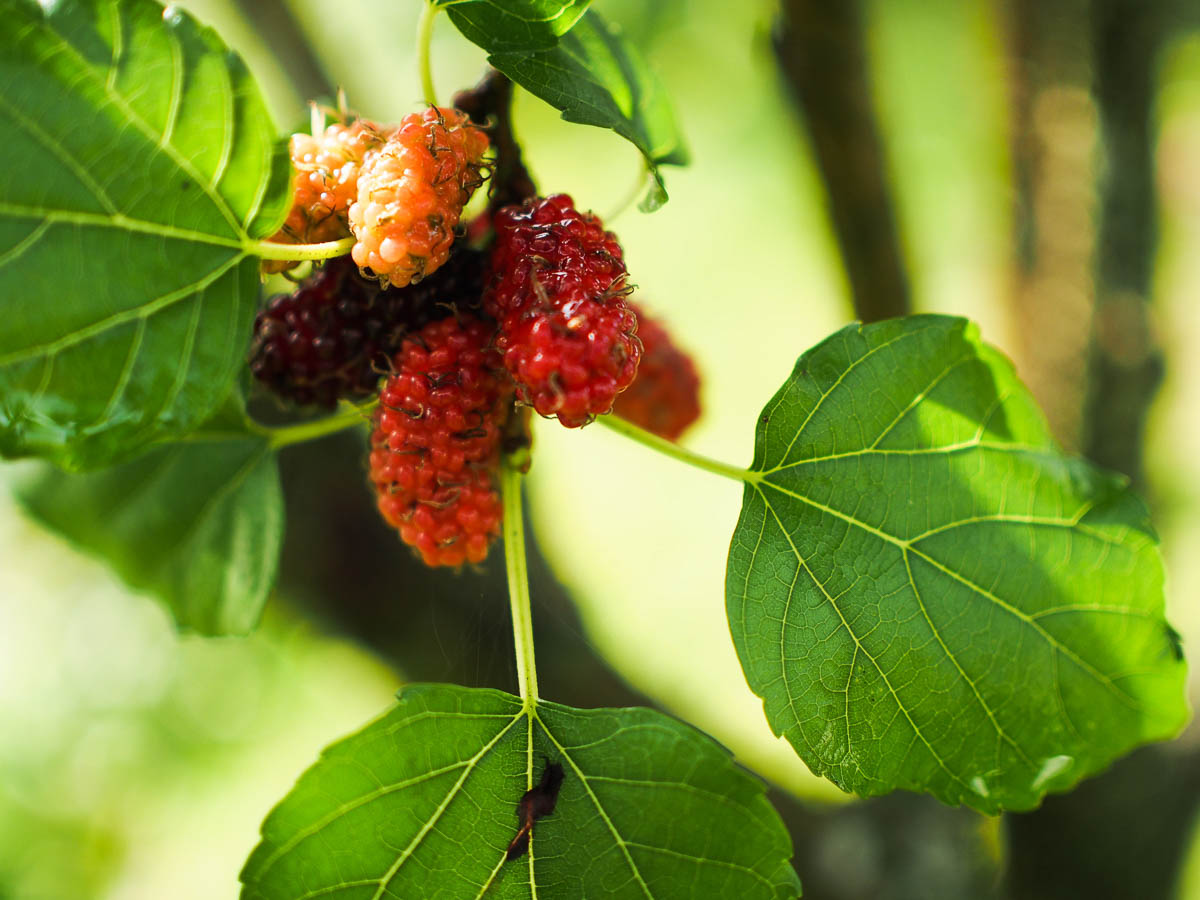White Mulberry
White Mulberry (Morus alba)
Other common names: Tut, Bebesaran, 桑

White Mulberry trees are a common addition to Southeast Asian edible gardens and produce edible leaves and fruit. The leaves can be dried and made into tea, while the ripe and unripe fruits are eaten raw or part of desserts.
As a perennial tree, it is a common sight in edible gardens, permaculture gardens, and low maintenance beds.
Sun and soil needs:
This tree does best in full sun gardens with a minimum of 6 hours of sunlight.
Plants do best in pots with loamy soil at least 30cm deep, or in true ground. These plants are vulnerable to root rot, so ensure that your pots drain well, and that your soil has plenty of organic matter to let the roots breathe. Keep your plants cool with mulch and plenty of water to encourage growth.
This tree can grow up to 15m high. The tree is best maintained at roughly 1.5m high for easy maintenance and harvesting.
Growing:
.jpg)
Mulberry trees are rapid growers and generally do not require fertilising. Regular hard pruning will keep the plant at a manageable size and encourage fruiting.
The tree will need to be around 4 years old before it starts producing fruit if grown from seed. Rooted cuttings can produce fruit after a month if taken from a mature tree.
Harvesting:
Young leaves can be harvested at any time.
Ripe fruits are pink, dark purple or white, depending on the variety. Ripe fruits should be harvested for immediate consumption.
Propagation:
This tree can be grown via seed but are usually propagated via stem cuttings rooted directly in soil.
Common problems & solutions:
Aphids, Mealy Bugs, Whiteflies, and Spider Mites often infest the plant if it has underlying problems like root rot. Mechanical pest control methods like pruning the infested parts are the best methods for managing these pests in the short term, but resolving the underlying problem will prevent them in the long term.
Birds and rodents may eat unripe or ripe fruit. Wrap your fruit in netting when it starts to develop.

